Over the years, Prime Minister Justin Trudeau and his distinctive diplomatic socks have gone to the Oval Office to meet two very different U.S. presidents, one of whom will return to the White House after November's election.Jonathan Ernst/Reuters
Edward Greenspon is the president and CEO of the Public Policy Forum and former editor-in-chief of The Globe and Mail.
Janice Gross Stein is the Belzberg Professor of Conflict Management and the founding director of the Munk School of Global Affairs & Public Policy at the University of Toronto.
Drew Fagan is a professor at the Munk School and former assistant deputy minister for foreign policy. The Public Policy Forum and the Munk School of Global Affairs and Public Policy are developing a pro-active strategy for Canada’s relationship with the United States timed to the 2024 presidential election.
It’s not just about Donald Trump. It’s about us, the indispensable ally that has allowed ourselves to dwindle into dispensability.
That Canada’s neighbour is turning its back on the liberal values and internationalism that propelled the United States up the Billboard charts of world powers over the past century-and-a-half – that’s on the Americans. We don’t get a vote, after all.
That we are less consequential in the face of rising American nationalism and fragmenting geopolitics, however – that’s on us.
We have become inward-looking, too. When our long-time allies, such as Germany, Japan and Korea, come seeking our resource-rich assistance with their energy insecurities, we demur. Among NATO’s 32 members, our spending as a share of GDP is the sixth-lowest. There is more to come given the recent defence policy update, but still more is required. We have fallen in the World Bank’s Ease of Doing Business Index from fourth in 2007 to 23rd in 2020, at a time when massive investments in digital technologies, life sciences and the energy transition are critical for remaining competitive.
Canada, then, finds itself caught in a massive paradox. Geopolitical instability draws us ever more deeply into the U.S.’s orbit at the very moment that isolationism, populism and protectionism have made that orbit less stable. Our destiny will depend on whether we allow muscle to turn to fat and initiative to passivity – or whether we can do what it takes to matter more.
So it’s not just about Mr. Trump. He simply concentrates the mind.
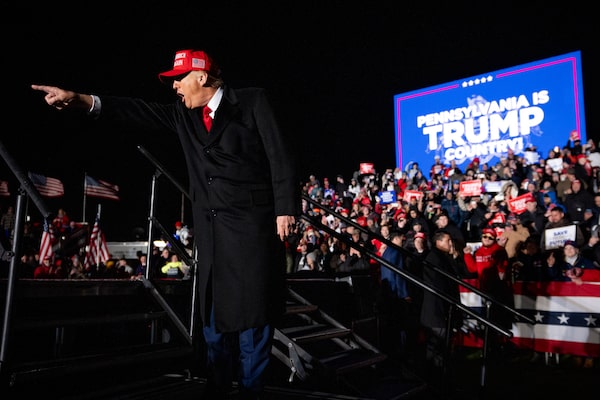
Nov. 5's election is a rematch between Donald Trump and Joe Biden, whose last contest in 2020 ended badly: Trump supporters stormed the U.S. Capitol to stop Congress from confirming Mr. Biden as the winner. Mr. Trump is still dealing with the legal fallout from that, as well as a hush-money case that has made him the first ex-president to face criminal trial.Andrew Harnik/Getty Images; Tom Brenner/The New York Times
Canada’s vulnerability to U.S. regression is clear. That single market accounts for 78 per cent of our exports and a quarter of our GDP. Even Germany leans less heavily on its combined EU neighbours. Securing access for our goods has preoccupied our political leaders since before Confederation. We have never found an escape clause from or an antidote to our geography. It’s the same story on defence, where Canada has benefited for decades, if not as a free rider, then at least as a heavily discounted one. We are North American – usually for the better.
In the midst of the 2018 renegotiation of NAFTA, Mr. Trump remarked that “every time we have a problem [with Canada], I just put up a picture of a Chevrolet Impala.” The taunt about the Oshawa-assembled model underscores the asymmetry of the relationship, particularly when it’s reduced to mercantilism.
What if a second-term president Trump scuppered free trade altogether, as he could just by giving six months’ notice that the U.S. intended to withdraw from what is known in Canada as the Canada-United States-Mexico Agreement (CUSMA)? Or what if he triggered a review in 2026, as any of the parties can do?
Even just imposing the 10-per-cent tariff he’s mused about would be bad enough: A 2019 Statistics Canada report suggested that Canadian exports would plunge by nearly a quarter even at an effective tariff of 6 per cent. Economies adjust, as they always do, but the net effect could be comparable to the recession of the early 1980s, when unemployment shot up 4.4 percentage points in a single year. Mr. Trump’s tariffs, Joe Biden’s subsidies – to different extents, they both disadvantage Canada.
That’s the gloomy – albeit conceivable – worst-case economic scenario. But for all the hand-wringing over Canada being more alone in the world than ever, our good geography and better geology mean we are not without cards to play. Our advantages include critical minerals, oil, natural gas, uranium, clean electricity, food, fertilizer, water, carbon burial, space technologies, AI and quantum research, advanced health research and products, three oceans, much of the now-contested Arctic, and tried-and-true north-south corridors. These Canadian assets are made-to-measure for an era in which the “friends” in friend-shoring efforts are desperate to reduce their exposure to the geoeconomic extortions of Russia and China. Small wonder that German Chancellor Olaf Scholz remarked during his 2022 visit that “Canada has similarly rich mineral resources to those of Russia – with the difference that it is a reliable democracy.”
What we lack is a strategy. Where are the most promising intersections of U.S. and Canadian national interests? Which assets matter most? A strategy can help anchor millions of random transactions in common understandings, hopefully mitigating the risk from unilateral actions. As always, it is up to us, the weaker and more motivated party, to come up with the plan.
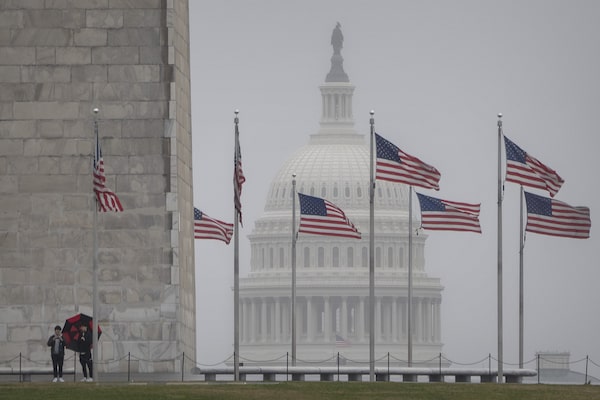
On Capitol Hill, Democrats and Republicans are anxious to see how the election will alter the balance of power. In addition to the presidency, there are 435 congressional districts up for grabs, and 34 of 100 Senate seats.Mark Schiefelbein/The Associated Press
Who becomes president later this year obviously makes a difference around what happens in Fortress America; a Democratic or Republican Washington will have different consequences for the rest of the world. Still, regardless of circumstances, the same challenge remains: What can Canada do now to ensure, as they say in the Hunger Games, that “the odds be ever in our favour?” Or in other words: what will it take to matter more to the United States? Or, better yet, what can we offer that nobody else can?
Think of the 1989 free-trade Agreement. Brian Mulroney’s government was able to offer a solution to the persistent and existential U.S. energy security threat and place it within a broader trade access pact.
First, we need to clear away those comforting yet distracting illusions that align more with the world we want, rather than the one we have. We are not going to lower interprovincial barriers or grow the population fast enough to build an autonomous Fortress Canada economy. We can’t count on domestic respite from what Pierre Trudeau characterized as the grunts and twitches of an arguably less even-tempered beast.
Nor are we going to sidestep U.S. protectionism with another pass at his “Third Option” of finding alternative markets to the United States. Nearly a quarter-century after Beijing’s ascension to the WTO, Canada’s annual exports to our second-largest market remain smaller than what we ship to the United States every 19 days. Similarly, while Canada likes to boast of its world-beating 15 free-trade agreements covering 51 countries and 1.5 billion consumers, CUSMA alone is five times bigger than the other 14 combined.
Canada's supplies of critical minerals, like nickel, could be a valuable source of leverage with Washington.Stephanie Foden/The Globe and Mail
But now for some positives. Our early research suggests that a “matter more” strategy should focus both on economic and physical security and should comprise three pillars.
First: deepening. We must identify bilateral opportunities that benefit both ourselves and the U.S., such as critical minerals or Arctic security. What is the 2024 equivalent to oil in the 1980s?
Second: broadening. We need to use Canadian assets to help our shared allies in the friend-shoring club with their economic and national security. One of the unspoken truths of Canadian diplomacy is that we matter more in the United States when we matter more in the world, beyond the United States (and vice versa).
And thirdly: accelerating. To matter more, we must build more of everything – from mines and carbon capture to ports and border crossings – and do so more quickly. We need to double down on our investments in the technologies of today and tomorrow, especially AI. These will power the next generation of industrial production and defence systems.
For decades, deepening and diversifying were treated as competing or counterbalancing approaches. Today’s geopolitics erases the distinction. If you help an ally reduce its dependence on Russia for gas or China for critical minerals, is that diversifying or deepening? If you increase spending on NATO or station troops in an at-risk area like Latvia, which is it? This marks a return to classic Canadian diplomacy; in his Nobel Prize-winning peacekeeping work in the Suez, Lester B. Pearson was acutely aware that his most grateful audience resided in Washington.
Deepening and broadening again serve us best as complementary concepts.
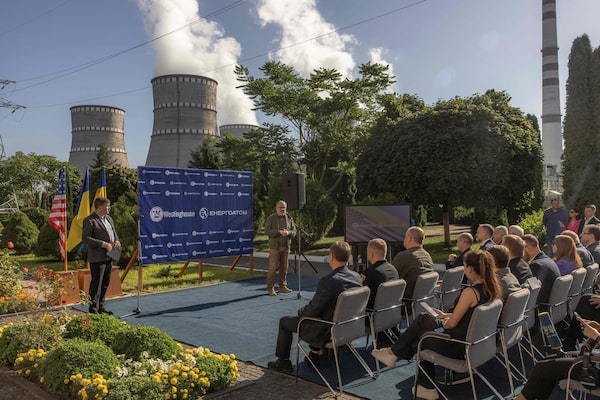
Last September, Ukraine's energy minister welcomed visitors to the Rivne nuclear plant for the first loading of Westinghouse fuel rods into its VVER-440 reactors. Canadian uranium now powers all nine of Ukraine's operational atomic plants, whose fuel used to come from Russia before the war.ROMAN PILIPEY/AFP via Getty Images
Consider the incredible and unheralded story of Canada’s uranium, probably the most underappreciated of our resource superpowers, through the lens of our three-pillar approach.
Shortly after Russia’s invasion, Ukrainian officials approached Cameco, a Saskatoon-based uranium producer that is the second-largest in the world, with a James Bond-like proposition. Ukraine’s Soviet-era nuclear reactors furnished 55 per cent of its electricity, but depended on the invader to fuel them – and the country was determined to break this stranglehold. Obviously, converting and fuelling reactors in a war zone would be risky, it warned. “We stepped up and said, ‘we can manage the risk. We want to do it,’ ” recounts Cameco president Tim Gitzel.
Two years on, Canadian uranium is keeping the lights on in Ukraine, powering all nine of the 15 reactors remaining in operation. The supply chain begins at mines in northern Saskatchewan and continues through two stages of processing at Blind River and Port Hope in Ontario. The uranium is then shipped to Europe for enrichment and is, finally, fabricated into fuel rods by the venerable U.S. industry giant, Westinghouse, which happened to be acquired last year by Cameco and Brookfield Asset Management. Other former Soviet bloc states are taking note. Bulgaria, Slovakia, Poland and the Czech Republic have either completed or are in talks with Cameco/Westinghouse about weaning their reactors off Russian fuel. Cameco was fortunate to avoid the decade-plus wait for a new mine because it was able to restart its idle McArthur River facility.
That’s the broadening and the accelerating. How about the deepening? The United States operates the largest fleet of reactors in the world, supplying one-fifth of the country’s electricity. But the most powerful country on Earth no longer produces or processes much uranium. Canada is its largest supplier, with a 27-per-cent market share. Incredibly, even after the attack on Ukraine, the U.S. gets nearly half its uranium from Kazakhstan, Russia and Uzbekistan, with an even deeper reliance on Russia for enrichment. Recognizing this vulnerability, even Mr. Trump rejected a recommendation from his Commerce Department to impose the same kind of national-security tariff on Canadian uranium he had backed on our aluminum and steel.
Congress has recently turned its attention to reducing Russia’s role between now and 2028. Mr. Gitzel, who has seen his company’s market capitalization double since the invasion began to $24-billion today, says: “We have all the pieces of the puzzle to be energy self-sufficient together in North America and still be able to help the rest of the world.”

An old flag gets taken out of service at the Peace Arch Historic State Park in Blaine, Wash., just across the border from B.C. Billions of dollars worth of goods and services cross this frontier every day.Elaine Thompson/The Associated Press
The periodic political paroxysms of our restless neighbour have challenged Canadian prime ministers since John A. Macdonald. Isolationism is, after all, one of the recurrent traditions of American public life, according to academic Walter Russell Mead. George Washington counselled the fledgling republic to have “as little political connection as possible” with foreign countries. The first Canada-U.S. battle over softwood lumber protectionism occurred in the 1790s. Andrew Jackson’s “the humble members of society” populism was the 1830s version of Mr. Trump’s MAGA.
The War of 1812 aside, the low point of the Canada-U.S. relationship – and let’s hope it continues to be the low point – coincided with Confederation. In between nation-building conferences, various Fathers of Confederation made the trek down to Washington in a bid to save the Reciprocity Act of 1854 from Congressional abrogation. Plus ça change: We couldn’t muster a compelling enough case in the fever of post-Civil War nationalism.
The modern collaborative relationship was born in Kingston on Aug. 18, 1938. A month before the infamous Munich Agreement, then-president Franklin Delano Roosevelt christened the Thousand Islands Bridge alongside prime minister William Lyon Mackenzie King and received an honorary degree from Queen’s University. Behind the scenes, the leaders worked on a defence production pact that would further the war effort and continues to confer special advantage on Canada.
After Pearl Harbor, we worked feverishly with the Americans to protect Alaska from possible blockade through the speedy construction of the Norman Wells pipeline and Alaska highway. We restarted uranium mining in support of the Manhattan Project.
The Cold War reoriented but did not fundamentally change that security focus. Canada partnered with the U.S. on the famous Distant Early Warning (DEW) line in the Northern Arctic, the creation of NATO, and the crown jewel of bilateral relations, the North American Aerospace Defence Command (NORAD). The postwar boom increased commerce across the industrial heartlands in the 1950s and 60s. The two countries built a Seaway together and negotiated the Auto Pact. The lesson: as global circumstances change, how Canada can matter more also can change – but the imperative of mattering more remains the same.
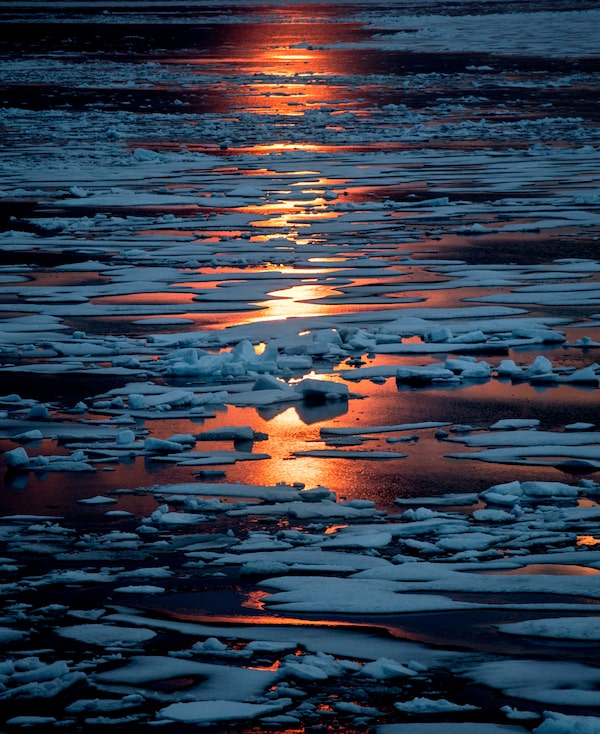
Climate change's impact on Arctic ice has left Canada with new security challenges in the North, which is more accessible to foreign shipping every year.David Goldman/The Associated Press
In the wake of the expansion of globalization in the 1980s, security considerations receded in favour of freer movement of goods and capital. Now, national security is again a pre-eminent issue, and defined expansively in economic, technological and defence terms. National governments around the world are adjusting their foreign policies. In Canada, this obliges us to look anew at our capacity to matter to U.S. and allied priorities.
An Arctic rich in minerals and open to navigation matters more than ever to the security of both the U.S. and Canada, especially given Russian and Chinese ambitions. The defence policy update recognizes the Arctic as a priority and is consistent with deepening. But it is the accelerating imperative, including shortening procurement timelines, that will determine effectiveness. We need to move quickly on building dual-use infrastructure and state-of-the art satellite technology, in partnership with the private sector and Indigenous communities, and invest in next-generation technology for underwater surveillance.
Investment in the Arctic also provides us with a path of least resistance in the inevitable move toward NATO’s target of 2 per cent of GDP defence spending. Canadians may not like to spend on the military but do identify with the North. For five decades, Canada and the U.S. have managed to set aside questions of sovereignty while continuing joint patrols of North American airspace through NORAD. If we want to matter more, it may be time for NORAD to play a bigger part in maritime and satellite surveillance operations and for a NATO with two new northern members in Sweden and Finland to assume a role in the Arctic.

Migrants recreate Jesus's journey with the cross in Mexico's Ciudad Juarez, across the border from Texas.HERIKA MARTINEZ/AFP via Getty Images
We also need to turn our gaze farther south, all the way to the American border with Mexico, where migration has become a defining bipartisan issue. We are North Americans and should think of the U.S.’s southern border as ours, too, lending a hand where we can.
In the course of our research project so far, Americans have asked pointedly if Canada might direct some development funding to help stabilize the infamous northern triangle of Guatemala, Honduras and El Salvador, where many migrants originate. These Americans also caution that Canada should exercise great vigilance to ensure we don’t ourselves become a source of undocumented migrants. The last thing Canada needs is to give Americans reason to lump together their southern and northern borders.
There are also a plethora of economic opportunities that offer similar possibilities to uranium. Some of these can be rolled together in an updated version of the original 1989 free-trade agreement’s energy chapters, possibly covering such assets as critical minerals and carbon management. The early months after the invasion of Ukraine provided a fascinating demonstration of just what collaboration can accomplish. With Europe reeling, we teamed up to expand gas production from Canada to assist with emergency exports of LNG to Europe from Gulf Coast facilities. At one point, the extra volume of Canadian gas was equal to about two-thirds of the emergency U.S. shipments. With liquefication capacity soon coming on-stream on Canada’s Pacific coast, we now have a chance to further co-ordinate in addressing energy insecurities in Asia (from Canada) and Europe (from the United States).
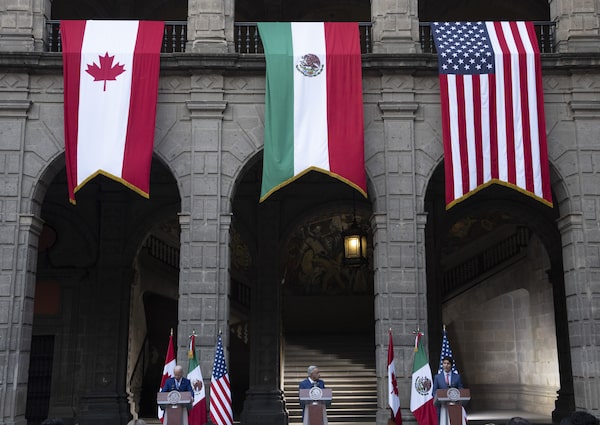
Mr. Biden and Mr. Trudeau speak on either side of the Mexican President, Andrés Manuel López Obrador, at last year's Summit of the Americas in Mexico City. Mr. López Obrador's term is running out, and Mexico will swear in a new president on Dec. 1; the U.S. inauguration, whoever its main attraction will be, is scheduled for Jan. 20.Adrian Wyld/The Canadian Press
Halfway through the next U.S. presidential term, any of Canada, the U.S. or Mexico can initiate the CUSMA review and demand changes. Our negotiators played a poor hand exceptionally well the last time around, but we must be attentive to the risks of a repeat of the 1866 abrogation. The Biden administration’s chief trade official has already served notice that the agreement will be back on the table. “You do not want that review to happen in a way that all three parties come to the conversation too comfortable,” Katherine Tai said in March. “The whole point is to maintain a certain level of discomfort – which may involve a certain level of uncertainty … That discomfort is actually a feature – not a bug.”
Whether it’s four more years of Mr. Biden or Mr. Trump, the clock is ticking on our opportunity to maximize our assets and once again make ourselves indispensable. In the next two years, we need to give Team Canada more to work with.
Entrenching a “Matter More” mindset in every aspect of the relationship – both in classic bilateral fashion and beyond North America – is imperative. And we need to be all-in, which means the kind of foreign policy consensus at home that we enjoyed during the renegotiation of NAFTA.
Neither Lester B. Pearson nor Brian Mulroney resorted to half-measures in aligning Canadian and U.S. interests. They understood that a “Matter More” approach is not for the ambivalent, or the faint of heart. We have their made-in-Canada, plays-well-in-the-U.S. model to follow. Now it’s our turn. If we don’t want to be alone in the world, we need to go all-in on a strategy for today’s circumstances.